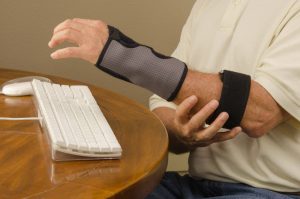Recent research shows that certain manual tasks commonly performed on the job may be increasing your risk of tennis elbow, a painful condition that may require surgery. In light of this evidence, it is important for employers and employees to take steps to protect themselves from this condition.
About Tennis Elbow
Tennis elbow, also known as “lateral epicondylitis,” is a disorder that develops in the elbow and causes joint pain. It occurs when the tendons in your elbow sustain damage, usually from repetitive motions that put stress on these tendons over time.
About the Research
The research study in question focused on five specific studies from the United States and France. Through meta-analysis, researchers concluded that there was a significant, positive association between exposure to repetitive activities involving the elbow and/or wrist and the development of tennis elbow. The more an individual was exposed to this activity, the more likely they were to develop this condition.
What Does It Mean for Workers?
This meta-analysis has important implications for workers and employers alike. People who spend their workdays performing repetitive motions with their wrists and/or elbows should be aware of their risk of developing tennis elbow. In addition, people who have already developed tennis elbow should make an effort to reduce or eliminate repetitive motions that affect this part of their body.
Based on the evidence found in this study, employers who require employees to engage in repetitive motions involving the wrist and elbow should also consider changing their protocols and/or providing supportive services to help prevent the development of tennis elbow among their employees. Furthermore, employers should be prepared to make adjustments and adaptations for workers who are already affected by this condition and need to prevent further damage.
If you are experiencing the symptoms of tennis elbow, you need to seek treatment to prevent the condition from getting worse. Please contact Southeast Orthopedic Specialists today to make an appointment.
Return to Blog